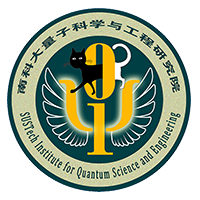Progress: Long-sought Negative Magnetoresistance in Topological semimetal observed in SUSTech lab
Recently,
Associate Prof. He Hongtao and Associate Prof. Lu Haizhou made a new progress
in the research on topological semimetals. They observed the long-sought
negative magnetoresistance in the topological Dirac semimetal Cd3As2. The work,
titled "Negative Magnetoresistance in Dirac semimetal Cd3As2", has
been published in the journal "Nature Communications" (impact factor
11.470).
The resistance of a solid changes under magnetic fields,
known as the magnetoresistance effect. The effect has diversified applications,
such as in magnetic storage devices and magnetic sensors. Because of the
Lorentz force, a magnetic field usually prevents electrons from moving forward.
As a result, the resistance increases with increasing magnetic field in most
occasions, leading to the positive magnetoresistance. In nature, negative
magnetoresistance is rare in non-ferromagnetic materials. The only known
example so far is the weak localization effect, which arises from the quantum
interference at extremely low temperatures. In recently discovered topological
semimetals, a new mechanism of negative magnetoresistance may emerge. The band
structure of a topological semimetal looks like that of graphene, but in three
dimensions (Figure 1a), with the conductance and valence bands touching at a
finite number of momentum points, dubbed the Weyl points. The Weyl points can
host paired monopole and anti-monopole in momentum space (Figure 1b). The
nontrivial topological structure may generate an effect much similar to the
chiral anomaly in high-energy physics. As a consequence, a magnetic field that
is parallel to an electric field can generate a chiral current, effectively
giving rise to a semi-classical negative magnetoresistance.

In this work, the
negative magnetoresistance was observed in the topological Dirac
semimetalCd3As2. This material has extremely high mobility (10 to the 7 cm
squared per volt second) and large non-saturating transverse positive
magnetoresistance, thus promising many potential applications. Despite of many
previous works on Cd3As2, no negative magnetoresistance has been reported so
far, because of the high carrier density in the samples. The negative
magnetoresistance origins from the monopole and anti-monopole, so the Fermi
energy has to be as close to the Weyl nodes as possible. In other words, one
needs low carrier density to observe a prominent negative magnetoresistance.
The samples used in this work have the lowest carrier densities known to the
material, of the order of 10 to the 16 per cubic cm. At such low carrier
densities, the negative magnetoresistance can be observed even at room
temperature (Figure 1c). The samples in the experiment were from Prof. Jiannong
Wang’s lab at Hong Kong University of Science and Technology (HKUST). The
magnetoresistance was measured in Prof. Hongtao He’s Quantum Transport
Laboratory at SUSTech. Prof. Haizhou Lu provided the theoretical support to the
analysis of the experimental data, based on collaboration works with Prof.
Shunqing Shen from the University of Hong Kong. Dr. Hui Li from HKUST, Prof.
Hongtao He, and Prof. Haizhou Lu are the first authors with equal contribution.
Also, Prof. Haizhou Lu has joined another collaboration work by Shuang Jia’s
group at Peking University and Hasan’s group at Princeton University. The work
is on the negative magnetoresistance in TaAs, the first topological Weyl
semimetal, and has been accepted recently by Nature Communications.
The research was supported by SUSTech Research Start-up Fund, National Science
Foundation of China (grant no.: 11204183 and 11374135), and Young Scholar
Project of Thousand Talents Program of China.


Associate Prof. He Hongtao and Associate Prof. Lu
Haizhou
The research was supported by SUSTech Research Start-up Fund, National Science Foundation of China (grant no.: 11204183 and 11374135), and Young Scholar Project of Thousand Talents Program of China.
The link to the article
http://www.nature.com/ncomms/2016/160108/ncomms10301/full/ncomms10301.html



